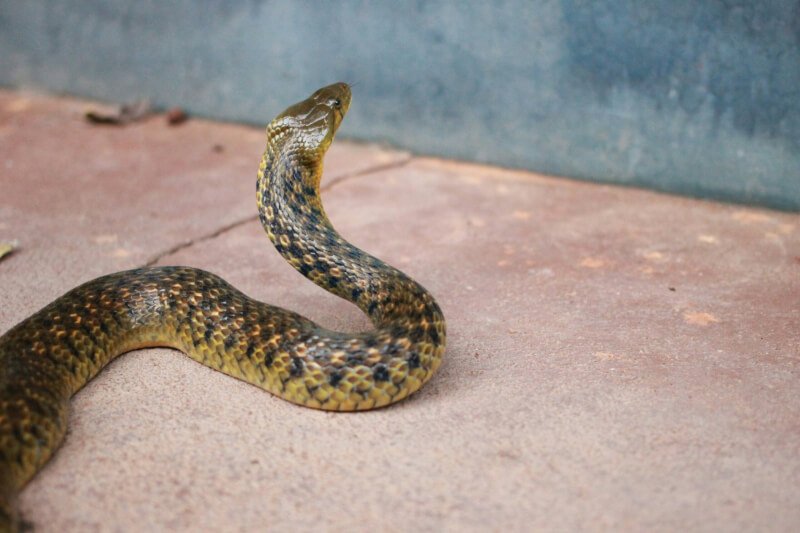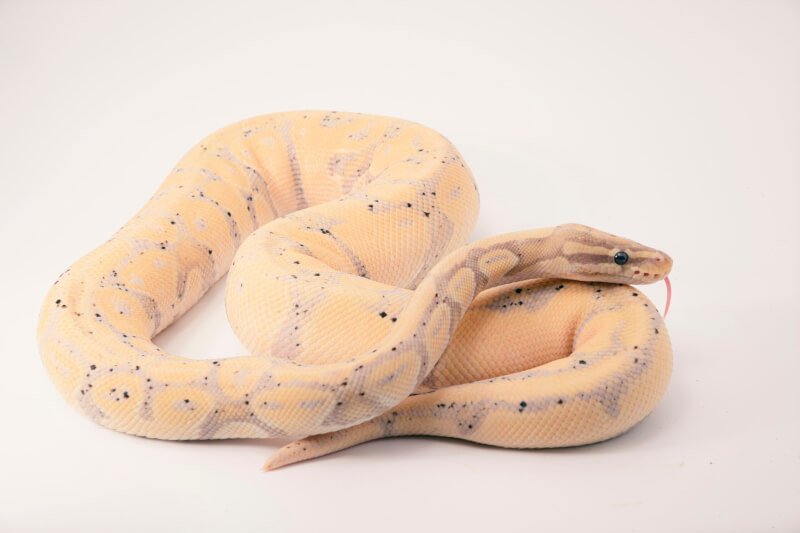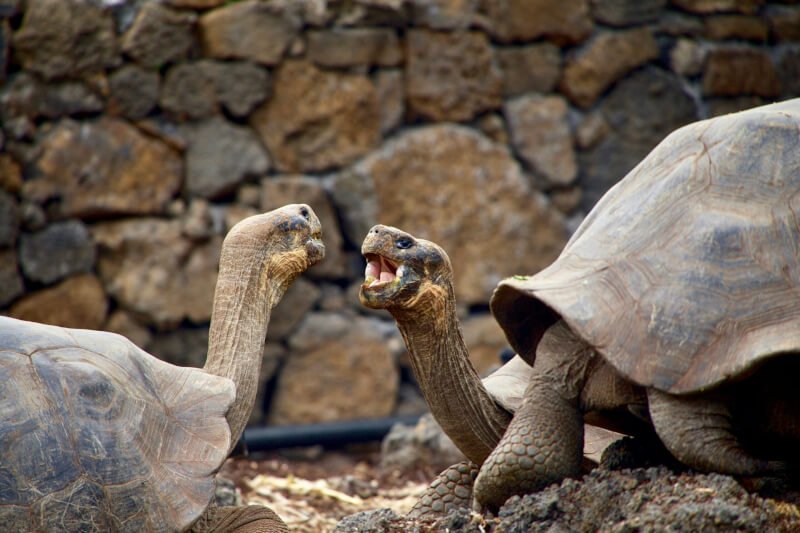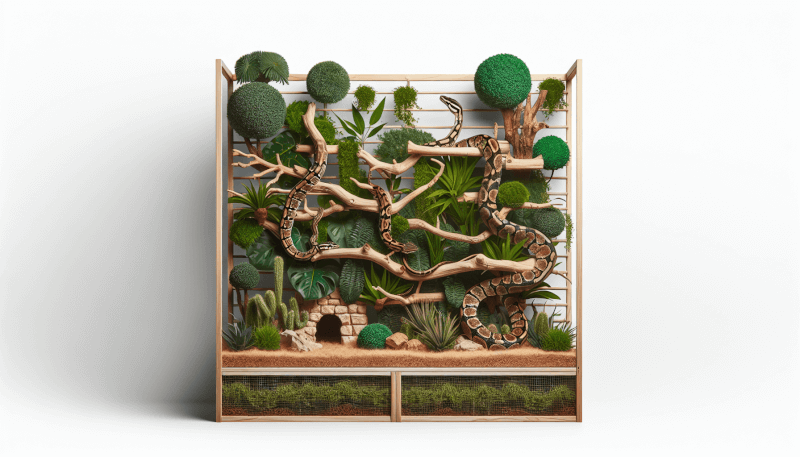Creating a safe and stimulating play area for your snake is essential to ensure their well-being and happiness. We all want our scaly friends to thrive and enjoy their surroundings, so it’s important to provide them with a space that meets their needs. This article will guide you through the process of setting up the perfect play area for your snake, giving you peace of mind knowing that they are safe, entertained, and able to explore their environment to their heart’s content.
Choosing the Right Enclosure
Researching the Snake’s Natural Habitat
When it comes to setting up a safe and stimulating play area for your snake, one of the first things you need to consider is the snake’s natural habitat. Snakes come from a variety of environments, such as deserts, forests, or tropical rainforests, and it’s important to mimic those conditions as closely as possible in their enclosure. Take the time to research the specific species of snake you have and their natural environment, including factors like temperature, humidity levels, and the types of hiding spots they would have in the wild.
Determine the Appropriate Size
Next, you’ll need to determine the appropriate size of the enclosure for your snake. Snakes require enough space to move around and explore, so it’s important to provide them with an enclosure that is large enough to accommodate their size and natural behaviors. Consider the adult size of your snake and choose an enclosure that allows them to stretch out fully. As a general rule, the enclosure should be at least as long as the snake’s total length and have a width and height that allow for ease of movement.
Selecting the Right Type of Enclosure
When choosing the right type of enclosure for your snake, there are a few factors to consider. Most commonly, snake owners opt for glass terrariums or plastic enclosures, depending on the specific needs of their snake. Glass enclosures provide visibility and are easy to clean, while plastic enclosures have the advantage of being lightweight and easy to manipulate for customization. Additionally, consider whether you need a secure locking mechanism to prevent escape, as some snakes are skilled escape artists.
Temperature and Humidity Requirements
Understanding the Snake’s Temperature and Humidity Needs
Maintaining the proper temperature and humidity levels within your snake’s enclosure is crucial for their health and well-being. Different snake species have specific temperature and humidity requirements, so it’s essential to understand and meet those needs. Some snakes prefer cooler temperatures while others require warmer conditions. Additionally, snakes from tropical environments require higher humidity levels compared to those from arid regions. Research your snake’s specific needs and ensure that the temperature and humidity are within the appropriate range.
Using Heating Elements
To provide the necessary warmth for your snake, you’ll likely need to use heating elements in their enclosure. Heat lamps, heat pads, or under-tank heaters can be used to create a temperature gradient within the enclosure. This allows your snake to move from warmer to cooler areas as needed to regulate their body temperature. It’s important to monitor the temperature using a reliable thermometer and adjust the heating elements accordingly to maintain the desired temperature range.
Monitoring and Adjusting Temperature and Humidity
Regular monitoring of the temperature and humidity levels in your snake’s enclosure is essential to ensure their comfort and well-being. Invest in reliable thermometers and hygrometers to accurately measure these parameters. Make adjustments as necessary to maintain the ideal temperature and humidity range. Keep in mind that seasonal changes and variations in ambient room temperature may require adjustments to your heating elements and humidity control methods.

Providing Hiding Spots
Creating Multiple Hiding Areas
Snakes are naturally shy creatures, and they require appropriate hiding spots within their enclosure to feel secure and reduce stress. It’s recommended to create multiple hiding areas to give your snake plenty of options. You can use various materials such as rocks, logs, or commercial reptile hides to create these safe spaces. Ensuring that you have at least one hiding spot in the warm and cool areas of the enclosure will allow your snake to regulate their body temperature effectively.
Using Natural or Artificial Hides
When considering hiding spots for your snake, you have the option to use either natural or artificial hides. Natural hides can mimic the look and feel of the snake’s natural environment, such as half logs or hollowed-out rocks. On the other hand, artificial hides made from plastic or other materials are readily available in pet stores and can be easier to clean and maintain. The choice ultimately depends on your preferences and the specific needs of your snake.
Placing Hides in Key Areas
Strategic placement of hiding spots within the enclosure is essential for promoting natural behaviors and reducing stress. Consider placing hiding spots near the warm and cool areas of the enclosure, as well as along pathways or near any climbing structures you may have. This allows your snake to feel secure while still being able to observe their surroundings and engage in natural behaviors.
Creating a Suitable Substrate
Choosing the Right Substrate Material
Selecting the appropriate substrate material is crucial for maintaining a clean and safe play area for your snake. There are various options available, such as newspaper, paper towels, reptile carpet, aspen shavings, or coconut fiber. When choosing a substrate, consider factors like absorbency, ease of cleaning, and whether it poses any health risks to your snake. Avoid substrates that are known to cause respiratory issues or impaction if ingested by your snake.
Considering Ease of Cleaning
Regular cleaning is essential to maintain a healthy environment for your snake. When selecting a substrate, opt for one that is easy to clean and replace. Newspaper or paper towels are popular choices as they can be easily removed and replaced during routine cleanings. Reptile carpets are also convenient as they can be removed for cleaning without needing frequent replacements.
Avoiding Substrates That Can Cause Harm
Some substrates may pose a risk to your snake’s health if ingested or cause skin irritations. Avoid substrates like cedar or pine shavings, as they can release harmful oils and particles when manipulated or wet. Sand or gravel substrates should also be avoided, as they may lead to impaction if accidentally ingested. Always prioritize the safety and well-being of your snake when selecting a substrate.

Adding Climbing and Perching Opportunities
Providing Vertical Structures
Snakes are natural climbers and providing them with vertical structures in their enclosure can enhance their overall well-being. You can incorporate branches, vines, or vertical logs into the enclosure to create climbing opportunities. Ensure that the structures are securely anchored and stable to prevent any accidents or injury to your snake.
Using Branches, Logs, or Rocks
Adding natural elements like branches, logs, or rocks to the enclosure not only provides climbing opportunities but also adds visual interest and enrichment for your snake. These items can mimic the snake’s natural habitat and allow them to engage in natural behaviors such as perching or basking. Opt for items that are of appropriate size and won’t pose any risk of injury or entanglement.
Ensuring Stability of Climbing Structures
If you choose to include climbing structures in your snake’s enclosure, it’s important to ensure their stability. Snakes can be surprisingly strong and agile, so make sure that any branches or logs are securely anchored and won’t easily shift or collapse. Regularly inspect the climbing structures to ensure they remain stable and safe for your snake to enjoy.
Introducing Environmental Enrichment
Utilizing Decorative Items
Environmental enrichment plays a crucial role in keeping your snake stimulated and engaged in their enclosure. You can introduce various decorative items such as artificial plants, vines, or even natural items like leaves or branches. These additions create a visually pleasing and more stimulating environment for your snake, encouraging exploration and natural behaviors.
Offering Different Textures and Materials
Snakes have a keen sense of touch, and offering different textures and materials in their enclosure can provide sensory stimulation. Incorporate various types of hiding spots or objects with different textures, such as rough or smooth surfaces. This variety can promote natural behaviors and encourage your snake to explore their environment.
Rotating Enrichment Items Regularly
To prevent boredom and maintain your snake’s interest, it’s beneficial to rotate the enrichment items within their enclosure on a regular basis. This could include moving branches or rearranging decorative items to create a change in the environment. By periodically introducing new items and removing others, you can keep the environment fresh and exciting for your snake.

Ensuring Proper Lighting
Understanding the Importance of Lighting
Proper lighting is essential for snakes as it helps regulate their circadian rhythm, aids in digestion, and stimulates natural behaviors. Some snake species are primarily nocturnal, while others are diurnal, so it’s important to understand the lighting requirements specific to your snake. Research the lighting needs of your snake species and provide appropriate lighting to mimic their natural day and night cycles.
Providing a Suitable Lighting Schedule
To establish a suitable lighting schedule for your snake, aim to provide 12-14 hours of light during the day and 10-12 hours of darkness at night. This schedule should mimic their natural habitat and allow them to have a proper day and night cycle. Consider using timers to automate the lighting schedule and ensure consistency.
Choosing the Right Lighting Source
When selecting a lighting source for your snake’s enclosure, there are multiple options available. Full-spectrum fluorescent bulbs or specialized reptile UVB bulbs are commonly used to provide the necessary light spectrum for snakes. These bulbs emit ultraviolet (UV) light, which is essential for proper calcium metabolism and overall health. Consult with a reptile lighting expert or veterinarian to determine the most suitable lighting source for your snake.
Managing Noise and Disturbances
Creating a Calm and Quiet Environment
Snakes are sensitive to noise and disturbances, and a calm and quiet environment is crucial for their well-being. Ensure that the play area is located in a quiet space, away from high traffic areas or noisy appliances. Minimizing loud conversations or sudden noises will help your snake feel secure and reduce unnecessary stress.
Avoiding Loud and Sudden Noises
Loud and sudden noises can startle and stress your snake, so it’s important to minimize these disturbances in their play area. Consider creating a designated space for your snake’s enclosure, away from areas where loud noises are common. Avoid slamming doors or sudden loud conversations near the enclosure that can cause unnecessary stress to your snake.
Minimizing Disturbances in the Play Area
In addition to minimizing noise, it’s essential to minimize disturbances in the play area itself. Snakes thrive in a stable and predictable environment, so avoid rearranging or disrupting their enclosure unnecessarily. When performing routine maintenance or handling tasks, do so in a calm and gentle manner to minimize any stress or disturbance to your snake.

Maintaining Cleanliness and Hygiene
Regularly Cleaning the Enclosure
Maintaining cleanliness and hygiene in your snake’s enclosure is crucial for their health and well-being. Regularly clean the enclosure by removing any waste, uneaten food, or shed skin. Wipe down surfaces with a reptile-safe disinfectant to prevent the buildup of bacteria or parasites. Follow a regular cleaning schedule to ensure a clean and healthy play area for your snake.
Removing Waste and Soiled Substrate
Prompt removal of waste and soiled substrate is essential to prevent the growth of harmful bacteria and maintain a clean environment. Snakes produce waste regularly, and promptly removing it from the enclosure will prevent odors and potential health issues. Dispose of waste properly and replace any soiled substrate to promote cleanliness.
Disinfecting and Sanitizing the Play Area
Regular disinfection and sanitization of the play area are crucial to prevent the buildup of harmful bacteria or parasites. Use reptile-safe disinfectants to clean the enclosure, including all surfaces, hides, and climbing structures. Ensure that the chosen disinfectant is safe for use around reptiles and follow the instructions carefully for effective cleaning.
Ensuring Safety Measures
Inspecting the Enclosure for Potential Hazards
Regularly inspecting the enclosure for potential hazards is essential to maintain a safe play area for your snake. Check for any loose or broken parts, sharp edges, or objects that could pose a risk of injury. Remove any unsuitable or potentially harmful items from the enclosure to prevent accidents.
Securing All Openings and Access Points
Snakes are known for their ability to escape, so it’s important to secure all openings and access points in the enclosure. Check that the lid, doors, or any other potential escape routes are secure and cannot be easily opened by your snake. Use locks or secure fastenings to double-check for any potential escape points.
Keeping Harmful Objects Out of Reach
Ensure that harmful objects or substances are kept out of reach of your snake in their play area. This includes cleaning products, pesticides, or any items that could be toxic if ingested. Be mindful of any potential dangers and take necessary precautions to create a safe and secure environment for your snake.
In conclusion, setting up a safe and stimulating play area for your snake involves careful consideration of their natural habitat, temperature and humidity requirements, hiding spots, substrate, climbing opportunities, environmental enrichment, lighting, noise management, cleanliness and hygiene, and safety measures. By understanding and meeting these needs, you can create a comfortable and enriching environment for your snake, promoting their overall well-being and allowing them to thrive. Remember to regularly assess and adjust the play area as needed to ensure it remains a safe and stimulating space for your snake.



